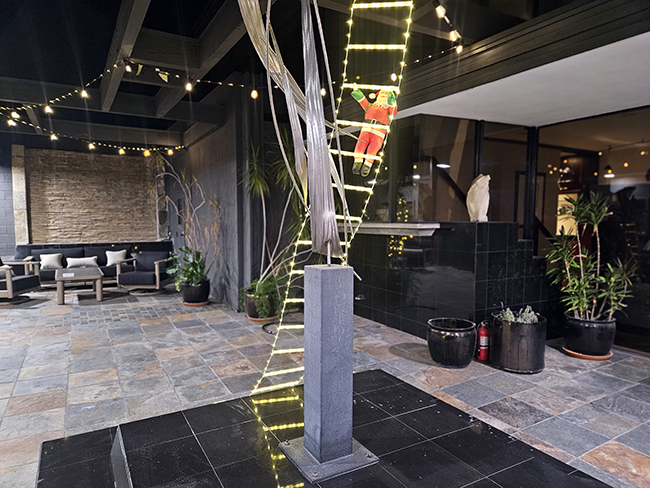Viewpoint: Disrupting and intercepting pollutants, one oak at a time

The oak tree canopy on Sixth Street in Claremont. Photo/courtesy of Mark von Wodtke
by Mark von Wodtke | Special to the Courier
According to a 2021 study by the University of Birmingham, England, “Mature oak trees will increase their rate of photosynthesis by up to a third in response to the raised CO2 levels expected in 2050.”
A site map of the Claremont intersection of the 210 Freeway and Base Line Road shows there is space for planting and nurturing at least 100 oak trees on Caltrans, City of Claremont, and private land near this intersection. This could intercept air emissions, yielding big benefits.
There is a great deal of freeway right-of-way where oaks could be added. Caltrans might consider this onramp as a prototype showing how to reduce emissions at freeway on- and off-ramps. This could become a disruption of existing landscape practices.

A site map showing the Claremont intersection of the 210 Freeway and Base Line Road. Image/courtesy of Mark von Wodtke
Claremont’s Parks and Recreation Plan had designated a park on Mansfield Drive adjacent to the 210 Freeway. That property was sold and zoned for residential development; however, many oaks could be planted in these residential developments to protect homes near the freeway. There is a large area south of the 210 zoned for a specific plan that could also feature air quality enhancing California oaks. Public park land north of the freeway could have many oaks. Monte Vista Avenue already has valley oak street trees reaching the freeway right-of-way. New street trees have been added to widen the sidewalk near the Claremont Club. Intercepting particulate matter with oak trees would provide a healthier place for people to exercise. These street trees could extend to Claremont’s City Yard on Monte Vista and Claremont Boulevard, where more oaks could be planted. Many more trees could also be added to Base Line near Monta Vista.
Businesses could have live oaks planted in parking lots and landscape areas. For example, why not help people get shade fresher air while they shop at Whole Foods Market? The Claremont Club has two magnificent oaks where people enjoy lounging next to a swimming pool. The club and other day care facilities could have oaks in play areas, providing better air for children.
The Claremont Colleges already have groves of oaks extending into the Village along Sixth Street. These oaks need to be sustained and regenerated. Some of the native oak groves still exist at the southeast edge of Pomona College near the athletic fields.
Oaks have diminished because of root fungus from overwatering, which is often found around artificially irrigated lawns. Be careful not to overwater these native oaks.
The City of Thousand Oaks nurtures oaks and has programs for planting trees with biochar to both enhance growth and sequester carbon dioxide. Claremont’s urban forester could update our urban forest plan and policies to replace and add to our inventory of trees. Our urban forest should demonstrate how to monitor emission interception and other tree attributes to improve air quality.
In addition to a 100 oak clean air effort, Claremont’s urban forest plan could upgrade key street tree locations at the 210 and 10 freeway crossings. We could also plant more oaks in the Village where there are more particulate emissions, helping to keep shopping in Claremont a healthy and pleasant experience.
Cooperation is key, regardless of the role we play. Let’s enhance the airshed capacity needed to balance local air quality. Let’s address global climate change. We can make this happen here.
Mark von Wodtke, FASLA, is a Fellow of the American Society of Landscape Architecture and Professor Emeritus of Landscape Architecture at Cal Poly Pomona.










0 Comments